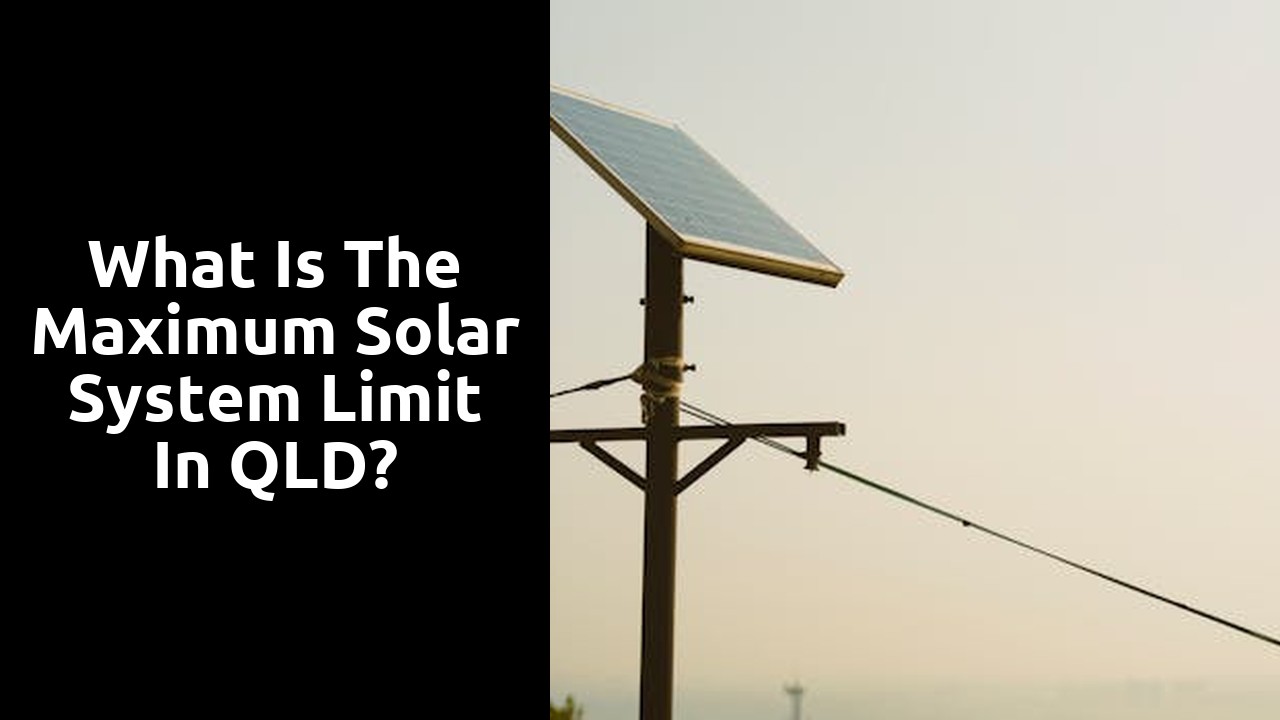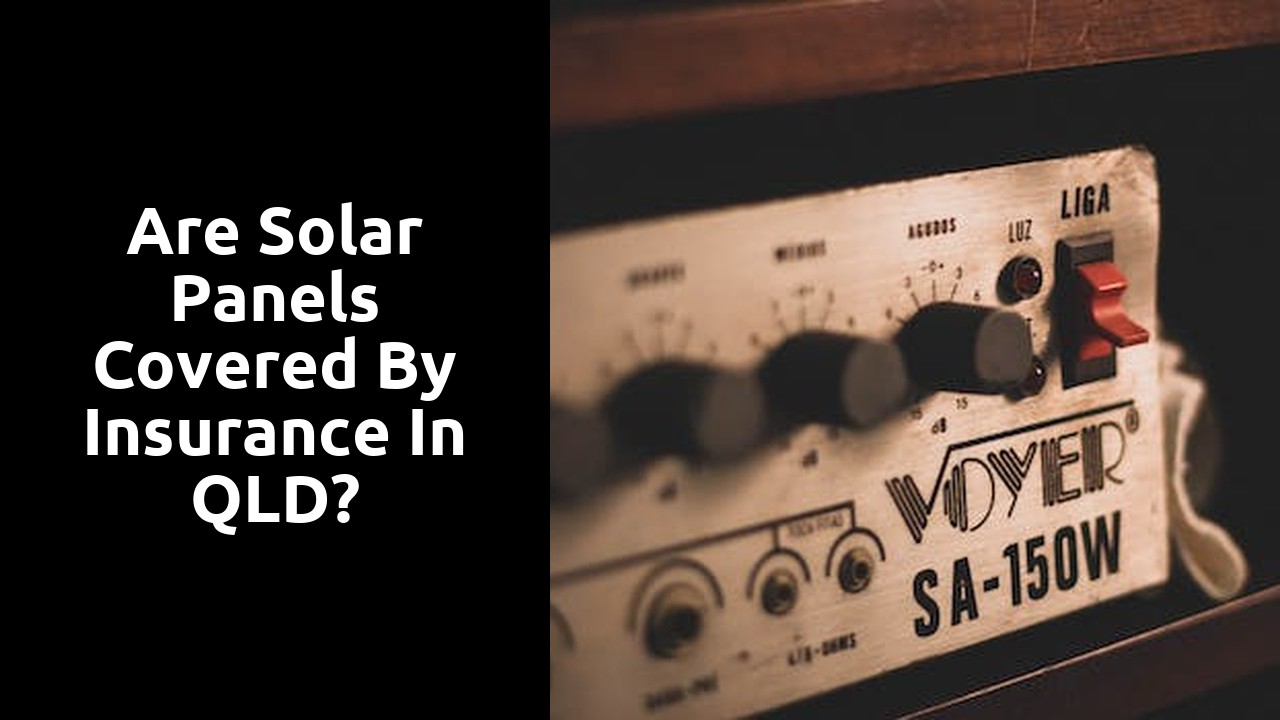
Solar System Approval Process
The approval process for installing a solar panel system in Queensland involves several key steps. Firstly, it is essential to obtain a grid connection approval from the local distribution network service provider. This step ensures that the system meets all safety and technical requirements for connection to the grid. Following this, an application for solar panel system approval must be submitted to the Clean Energy Council along with the necessary documentation. It is imperative to provide details such as system specifications, installation plans, and evidence of compliance with relevant Australian standards. Additionally, proof of Solar Panel System Performance Insurance coverage is required as part of the approval process to safeguard the system's performance and longevity.
Once the solar panel system approval is granted, it is necessary to secure permission from the local council for the installation. The council will review the proposed system's design and placement to ensure compliance with building and zoning regulations. It is crucial to follow all guidelines and obtain the necessary permits from the council before commencing installation. By adhering to these procedures and requirements, individuals can streamline the approval process and successfully set up their solar panel system in Queensland.
Steps to Obtain Permits for Solar System Installation
To start the process of obtaining permits for solar system installation in Queensland, individuals or organizations must submit an application to the relevant authority. This application will typically include details such as the location of the proposed solar system, the size and capacity of the system, as well as technical specifications and plans for installation. The authority will then review the application to ensure compliance with local regulations and standards, as well as assess any potential impact on the grid and surrounding environment. As part of this process, it is important to have Solar Panel System Performance Insurance in place to cover any potential risks or liabilities associated with the installation.
Upon receiving approval for the solar system installation, applicants will be required to pay a fee to obtain the necessary permits. These permits will outline the specific conditions and requirements that must be met during the installation process, such as compliance with building codes, electrical safety standards, and grid connection guidelines. It is essential to adhere to these requirements to ensure a smooth and successful installation process, as well as to protect the integrity of the solar system and maintain eligibility for incentives such as feed-in tariffs.
Grid Connection Requirements
When connecting your solar system to the grid in Queensland, it is essential to ensure that your system meets the required standards set by the local distribution network service provider. These requirements can include specific technical specifications, safety guidelines, and compliance with relevant legislation. Failure to adhere to these guidelines may result in delays or rejection of your grid connection application.
Additionally, as part of the grid connection requirements, some network service providers in Queensland may also request proof of solar panel system performance insurance. This insurance provides coverage in cases where your solar system underperforms or fails to deliver the expected power output. It is crucial to have this insurance in place to protect your investment and ensure compliance with the grid connection regulations.
Guidelines for Connecting Solar Systems to the Grid in QLD
When connecting a solar system to the grid in Queensland, it is imperative to comply with the regulatory guidelines set by the state government. These guidelines ensure the safety, efficiency, and reliability of the grid, as well as the longevity of the solar system. Additionally, part of the requirements for grid connection includes obtaining a certificate of electrical safety from a licensed electrical contractor.
Moreover, in Queensland, it is mandatory to have Solar Panel System Performance Insurance when connecting a solar system to the grid. This insurance covers the performance of the solar panel system over its lifetime, ensuring that it operates optimally and generates the expected amount of electricity. By adhering to these guidelines and obtaining the necessary insurance, solar system owners can contribute to the overall stability and sustainability of the grid in Queensland.
Feedin Tariff Eligibility
To be eligible for the feed-in tariff in Queensland, there are certain criteria that must be met. Firstly, the solar power system must be connected to the grid through an inverter that complies with the relevant Australian standards. This ensures the safe and efficient transfer of excess energy produced by the solar panels back into the grid. Additionally, the solar power system must not exceed the maximum capacity limit set by the state regulations. This is to ensure that the feed-in tariffs are provided to households and businesses that have appropriately sized solar systems installed. Moreover, it is imperative to maintain Solar Panel System Performance Insurance to safeguard against any unexpected faults or damages that may compromise the effectiveness of the solar system and its ability to generate excess power for the grid connection. By adhering to these guidelines and requirements, solar system owners can take advantage of the feed-in tariff and contribute to the overall renewable energy goals in Queensland.
Criteria for Receiving Feedin Tariffs for Excess Solar Power
For those seeking to benefit from feed-in tariffs for excess solar power in Queensland, meeting specific criteria is crucial. To be eligible for this incentive, the installation of solar panels must only be for residential or small business purposes. Additionally, the solar panel system must have a maximum capacity of 100 kilowatts to qualify for feed-in tariffs. It's essential to ensure compliance with these regulations to access the financial advantages associated with solar energy generation.
Moreover, individuals aiming to receive feed-in tariffs for excess solar power in Queensland must also ensure that their solar panel system performance is adequately insured. This requirement is implemented to safeguard against any potential damages or malfunctions that may occur, protecting both the system owner and the grid connection stability. By adhering to these guidelines and having the necessary Solar Panel System Performance Insurance in place, solar energy users can maximise their benefits and contribute to the sustainable energy landscape in Queensland.
FAQS
What is the maximum solar system capacity limit in Queensland?
The maximum solar system capacity limit in Queensland is currently set at 100kW for residential installations.
Is a permit required to install a solar system in QLD?
Yes, a permit is required to install a solar system in QLD. You need to obtain approval from the relevant authorities before commencing the installation.
How do I obtain permits for installing a solar system in QLD?
To obtain permits for installing a solar system in QLD, you need to follow the specific steps outlined by the local government or council. This typically involves submitting an application with details of the proposed installation.
What are the grid connection requirements for solar systems in QLD?
Solar systems in QLD must meet certain grid connection requirements to ensure they can safely and effectively connect to the electricity grid. These requirements are in place to maintain the integrity of the grid and ensure the safety of all users.
What are the guidelines for connecting solar systems to the grid in QLD?
The guidelines for connecting solar systems to the grid in QLD are set by the relevant energy authorities. These guidelines outline the technical specifications and procedures that must be followed to ensure a smooth and safe grid connection process.
Am I eligible for feed-in tariffs if I have a solar system in QLD?
Yes, you may be eligible for feed-in tariffs if you have a solar system in QLD. Feed-in tariffs are payments made to you for excess solar power that your system feeds back into the grid.
What are the criteria for receiving feed-in tariffs for excess solar power in QLD?
To receive feed-in tariffs for excess solar power in QLD, you typically need to meet certain criteria set by the energy regulator. These criteria may include having a grid-connected solar system within the approved capacity limits and complying with all relevant guidelines and regulations.
